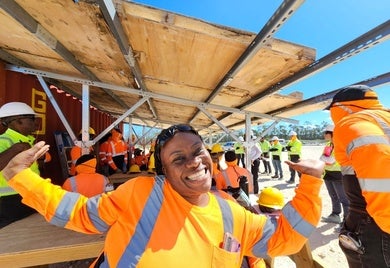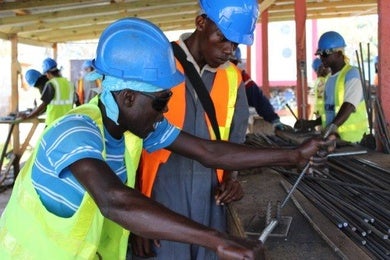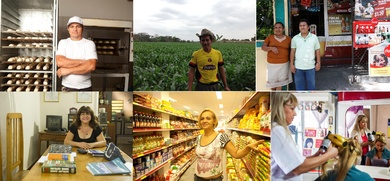Blogs Navigation
Sustainable BusinessRecent posts

Latin America and the Caribbean at the forefront of energy and technological progress
The region is rich in essential minerals and has the potential to develop its value chains. Countries must overcome several challenges to take advantage of these resources and their benefits. This requires transparency, governance, and attracting private investment.

We Helped a Solar Plant Hire More Women. Will the Industry Follow Suit?
The Lucayas Solar Power Project in the Bahamas marked a milestone by pioneering the integration of women in the construction of solar photovoltaic plants. What we learned in the process can help other companies’ commitment to gender equity.

Overcoming Three Challenges to Unlock the Potential of Green Hydrogen
Several countries in Latin America and the Caribbean have an adequate renewable energy generation capacity, abundant water resources and other favorable conditions to diversify the power generation matrices and decarbonize energy-intensive industrial segments. Breaking down legal, regulatory, financial, technical and market barriers can help them lead the charge on clean energy initiatives.

Sustainable Development Goals: The way forward for the private sector
An interview with Global Compact's Jaime García Alba on the Sustainable Development Goals In the coming days, world leaders from 193 countries will descend upon Addis Ababa, Ethiopia, for the Financing for Development Conference organized by the United Nations (UN). The goal will be to define a framework to implement the Sustainable Development Goals (SDGs) over the next 15 years. The private sector will play a key role, integrating business perspectives throughout the process.

Four ways to get more women on corporate boards in Latin America
Two weeks ago, Banco Santander invited 50 women to the University of California Los Angeles (UCLA) Anderson School of Management to participate in the W50 program. The W50 program is part of the Banco Santander Universities program. It builds on the decision of former Bank’s president Emilio Botín that Banco Santander should maximize its social impact through universities providing education and capacity building. Over 90% of Banco Santander’s Corporate Social Responsibility Program is invested in the Universities program, an investment of over US$240 (EUR 210) million in scholarships since 2005.

Water crises drive private sector innovation
Protecting areas that provide water through water funds highlights an innovative way to spur green growth driven by the private sector. With the on-going water shortages in Sao Paulo, Brazil, the region has a heightened awareness of the importance of securing water supply for big cities. Water supply links increasingly to deforestation and poor watershed management.

CEOs Talk Shop – Four sustainable investments to tackle business challenges
Whether you’re a global tourism operator in Jamaica or a midsize recycling company in Honduras, corporates of all sizes often face similar business challenges.

The investor world and green growth
I recently attended the Regional Global Green Growth Forum (3GF) in Latin America and the Caribbean in Santiago, Chile. At this forum and in the business world, we witness how issues of sustainability and green growth are transforming the real economy. In the coming years in Chile, non-conventional renewable energy will make up more than 70% of new installed capacity. In Brazil, the second auction round for solar drew more than 2 GW in bids for investments of almost $3 billion. And in Costa Rica, hundreds of companies have small-scale power generation systems, as part of the country’s distributed generation power plan.

10 things a company needs to know about the market at the base of the pyramid
Seventy percent of the population in Latin America and the Caribbean – more than 400 million people – live on less than $10 a day. Even though their income is low, this segment of the population still demands goods and services, and represents a market of $760 billion per year. Hundreds of pioneering companies see opportunities in this market to do profitable business while improving the quality of life of low-income people. But where should they start?


